
Basic Terms
Circles
A circle is a set of points equidistance from a common point called its center. We name different circles by specifying their centers:
 |
Chords
A chord in a circle is a segment with its endpoints on the circle. If a chord passes through the center of the circle, then it is also called a diameter of the circle. (Sometimes the word diameter also refers to the length of the diameter.)
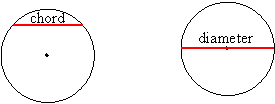 |
A radius of a circle is a segment with one endpoint on the circle and the other at the center of the circle. (The word radius can also refer to the length of the radius.)
 |
Secants and Tangents
A line that intersects a circle in two points of a circle is called a secant. A secant is like an "extended chord."
 |
A line that touches a circle at only one point is called a tangent, and the point is called the "point of tangency."
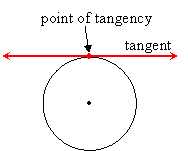 |
Rays and segments are also said to be tangent to a circle if they are part of a tangent line.
Two circles are said to be tangent if they touch at exactly one point:
 |
Common Tangents
Example 1: How many lines containing point P are tangent to the circle?
 |
Solution: There are two tangent lines:
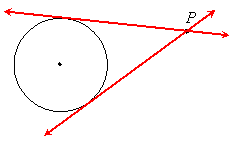 |
A line that is tangent to two circles is called a "common tangent."
Tangents to Two Circles
Example 2: How many common tangents do these two circles have?
 |
Solution: They have 4 common tangents:
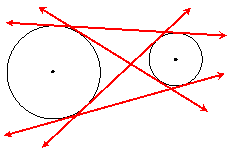 |
Arcs and Central Angles
A central angle of a circle is an angle whose vertex is the center of the circle. In the diagram, angle AOB is a central angle of the circle with center O:
 |
If the measure of the angle is less than 180o, then the points on the circle that are interior to the angle form a minor arc with endpoints A and B:
 |
The other points on the circle form a major arc:
 |
Naming arcs
Minor arcs are named by their endpoints with an arc over them, like this:
 |
Major arcs are named using three points, where the middle point is any point on it other than the endpoints and the other two are the endpoints:
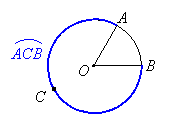 |
Return to Lesson 5